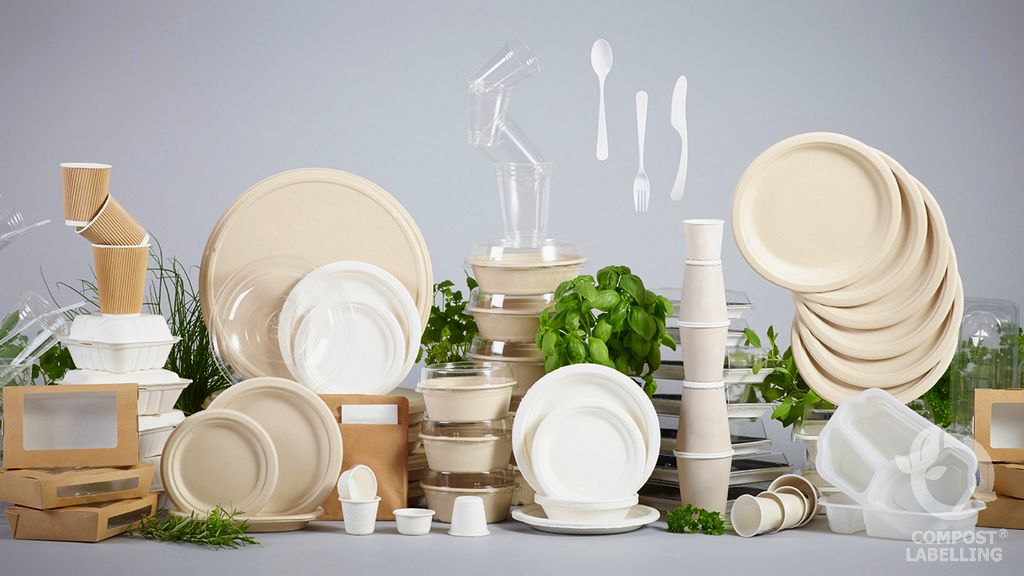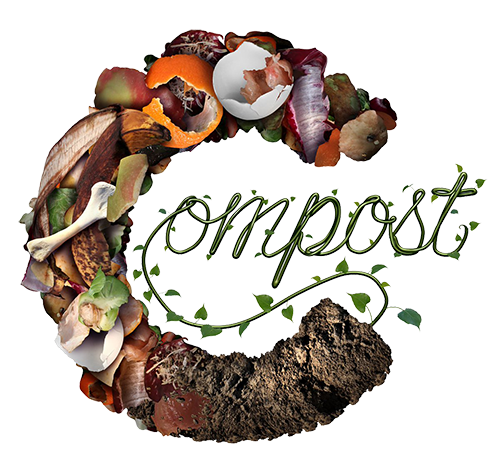Frequently Asked Questions for the C-Label Compostable Label
Composting is much more than aging manure, composting is a science. Decomposition takes place in a well-managed process to achieve certain positive results – a valuable product – with minimal negative environmental impacts.

What is the difference between compostable and biodegradable?
The fact that a material is compostable means that it is biodegradable. This material can be recovered in the composting process. A biodegradable material decomposes under the influence of microorganisms, but can leave residue after a composting cycle and has no guarantee for toxic residues. Therefore, a biodegradable material cannot be considered compostable before its compostability has been proven according to standard EN 13432.
What does composting mean?
The term composting means that a material is compatible with the composting process. The EN 13432 standard describes the properties that a finished product must provide in order to be recovered through organic recovery. Compostable means that a material is biodegradable under composting conditions. This material is completely broken down in one composting cycle and has no toxic effects. No heavy metal is released into the compost above a certain value.
What is compostability at home?
Home compostability differs from industrial compostability in two ways. In home composting, the temperature reached by the waste is usually only a few degrees higher than the outside temperature. In industrial composting, the temperature exceeds 50 degrees. Second, home composting is run by amateurs, and composting conditions may not always be ideal. However, industrial composting plants are managed by qualified personnel and kept under ideal working conditions.
What advantages does a compostable bag offer over a polyethylene bag?
The use of biodegradable and compostable bags increases recovery options. In addition to energy recovery and recycling, organic recovery is also possible. As we move away from oil, which is a non-renewable resource, it becomes more and more strategic to use raw material technologies based on renewable resources.
How is a compostable bag different from a traditional polyethylene plastic bag?
The main difference between them is that traditional polyethylene bags are made exclusively from a non-renewable resource. New generation compostable bags are produced from a blend of certified biodegradable and compostable polymers and starch. While these bags begin to deteriorate after exposure to microorganisms, traditional polyethylene only breaks down into smaller pieces after hundreds of years.
What is a food waste bin?
The food waste bin is generally used in the kitchen to collect food scraps. Food packaging, pet waste, diapers, plastic bags and liquids should not be placed in them. The best way to separate organic waste is to use a compostable food waste bin.
Our organization always follows domestic and foreign standards, applicable legal regulations and generally accepted practices in certification and labeling studies, and also has a trained and experienced staff and advanced technological facilities. In this framework, it also provides compost certification and C-Label (Compost Labeling) compost labeling services to businesses that request it.

C Label
- What is a C-Label Compostable Label?
- How to Get the C-Label Compostable Label?
- Who Can Get the C-Label Compostable Label?
- What Are the Benefits of Getting the C-Label Compostable Label?
- What are the Required Tests for the C-Label Compostable Label?
- Frequently Asked Questions for the C-Label Compostable Label
- Why Get the C-Label Compostable Label?
- Compostable Packaging Standards
- Compostable Labeling Solutions
- Useful Tips for Compostable Labels
- What Does the C-Label Label Do?
- What Contribution Does C-Label Contribute to the Industry?
- Business Partner with C-Label Environment
- Reduce Energy Use with C-Label

